A Revolutionary Technology: What is Blockchain?
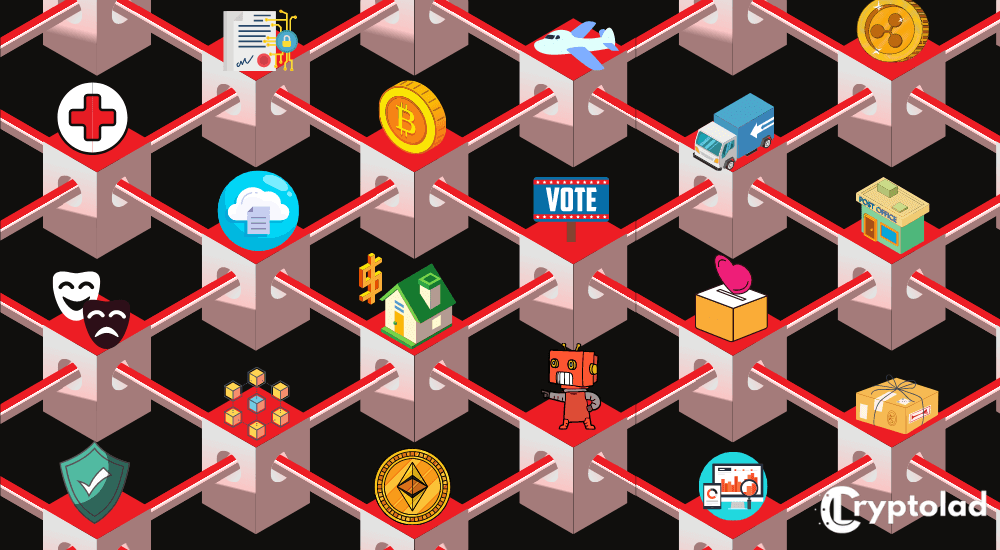
The term 'blockchain' sounds complicated, and it really isn't, don't worry. The core concept of blockchains is relatively easy to comprehend.
So, what is blockchain, and how is it changing the world we live in?
Basically, a blockchain is a database. So, to understand blockchain even better, you should consider it as a type of database.
Typically, a database is a collection of information that's stored electronically in a computer system.
See? Not that complicated after all.
Join us as we dive into the key fundamentals of blockchain technology!
What is Blockchain?
Blockchain technology is the brainchild of Satoshi Nakamoto, who developed Bitcoin, enabling digital information to be distributed. A network of computing blocks or nodes that makes up a Blockchain.

Durability, success rates, transparency, incorruptibility are some of the enticing characteristics of Blockchain.
By design, Blockchain is a decentralized technology used by a computer's global network to manage Bitcoin transactions easily.
Many new business applications will result in Blockchain usage, such as real-time tracking of goods, smart contracts, supply chain auditing, etc.
Blockchain was built to change the perception of how we share data by making the data more secure.
What Can Blockchain Technology Be Used For?
While Cryptocurrency and blockchain are often part of the same discussion, the two technologies are not synonymous, and blockchain actually has potential issues far beyond bitcoin and other cryptocurrencies.
Blockchain is a distributed ledger that makes it nearly impossible to change, hack, or cheat the system. It can be a way to get multiple parties that might not trust each other to share and agree on data.
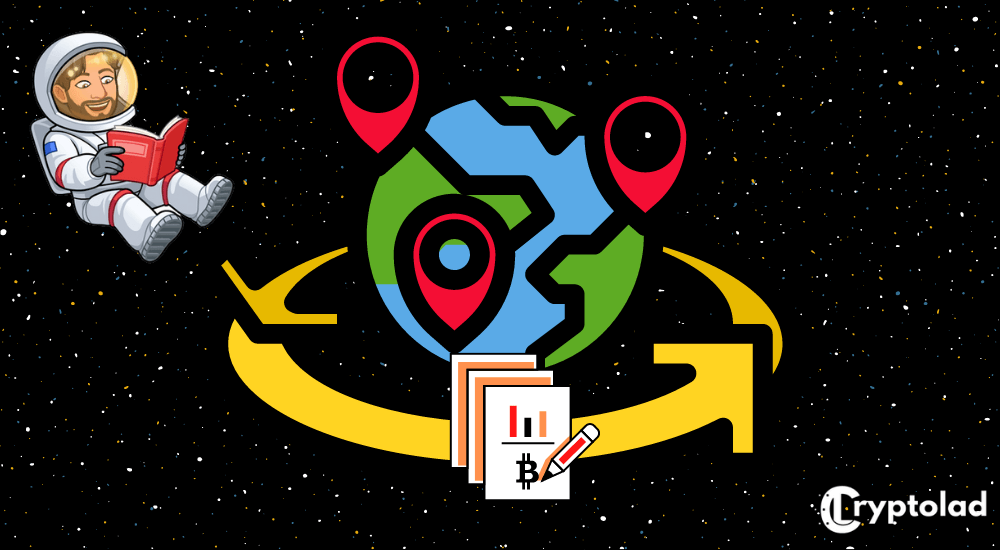
It’s this peer-to-peer system that’s made blockchain appealing for financial applications like Bitcoin and other cryptocurrencies.
But ironically, it is those same features that make it secure, making it impractical for many applications.
A well-designed blockchain stores records in blocks linked to one another using a cryptographic technique that creates a digital, distributed ledger.
The ledger can be shared and verified by anyone who has access — eliminating the need for costly third-party verification.
The cryptographic “signature” on each block links to the previous block in a way that makes the blockchain virtually tamper-proof after the blocks are created.
How Does Blockchain Technology Work?
Essentially, blockchain technology is just a structure that helps to store the public transactional records' blocks' in multiple databases, the 'chains.'
That's done in a network connected through the peer-to-peer nodes on the digital ledgers.
The exciting thing is that the owner's digital signatures authorize transactions on the ledger.

That helps not only to authenticate but also to safeguard the transactions from being tampered with.
Therefore, it ensures ultimate security for the information on the digital ledger.
And as much as information on the digital ledger is publicly available for everyone to see, no one can corrupt it.
Over the last years, many businesses have been striving to integrate blockchain technology into their operations.
And although blockchain advancements are still young, they could be revolutionary in the future.
So, let's take a look at what blockchain technology essentially entails.
- Cryptographic keys with both a private and public key are the keys responsible for transactions between two parties. Each user on the blockchain network has two keys that they can use to produce a more secure reference for their identity. And the essential part of blockchain technology is the secured identity. The secured identity can also be referred to as a digital signature, and it's used for controlling and authorizing transactions.
- Peer-to-peer network with a shared ledger - The digital blockchain network is merged with a peer-to-peer network. That entails a large number of individuals who will act as authorities. They use digital signatures to reach a consensus about a particular transaction. The deal is authorized by a mathematical verification that results in a successful transaction between the two parties.
- The means for computing - It helps to store the records for specific transactions on the network.
Components of a Blockchain
As we have mentioned earlier, one of the cardinal features of blockchain technology is confirming and authorizing transactions.
That said, we will take a look at the different entities involved in a transaction.
The Hash Encryptions
To secure data on the blockchain network, blockchain technology uses hash encryption. It relies on the SHA256 algorithm to secure information.
The sender's address, the public key, the receiver's address, the transaction, and private key details are transmitted via the SHA256 algorithm.
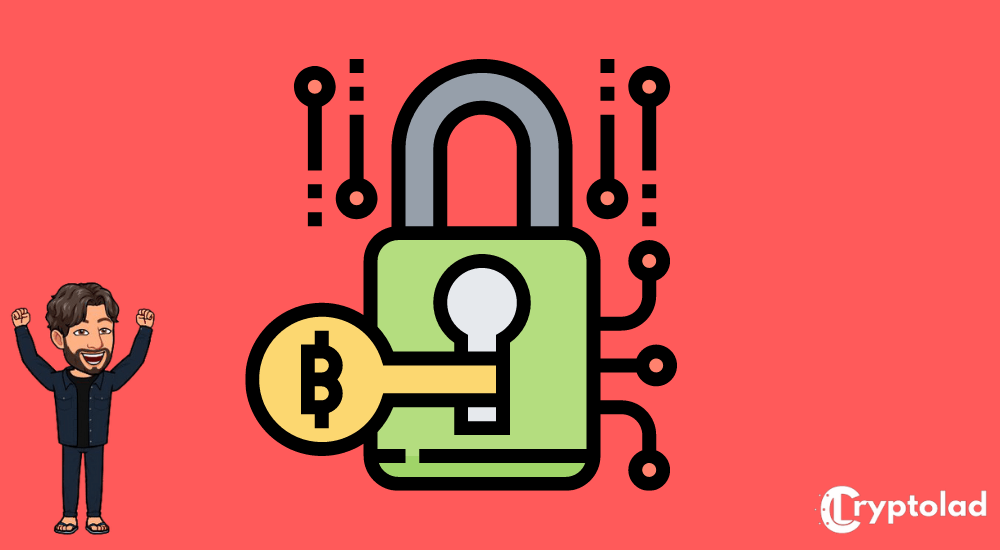 This encrypted information is what we refer to as hash encryption. The SHA256 algorithm makes it impossible to hack hash encryption; simplifies authenticating the sender and the receiver.
This encrypted information is what we refer to as hash encryption. The SHA256 algorithm makes it impossible to hack hash encryption; simplifies authenticating the sender and the receiver.
Proof of Work
On the blockchain network, each block has four main headers. That includes;
- The transaction details
- The previous hash; locates the previous block
- Nonce; an arbitrary number that helps to differentiate the hash address of a block.
- Block's hash address
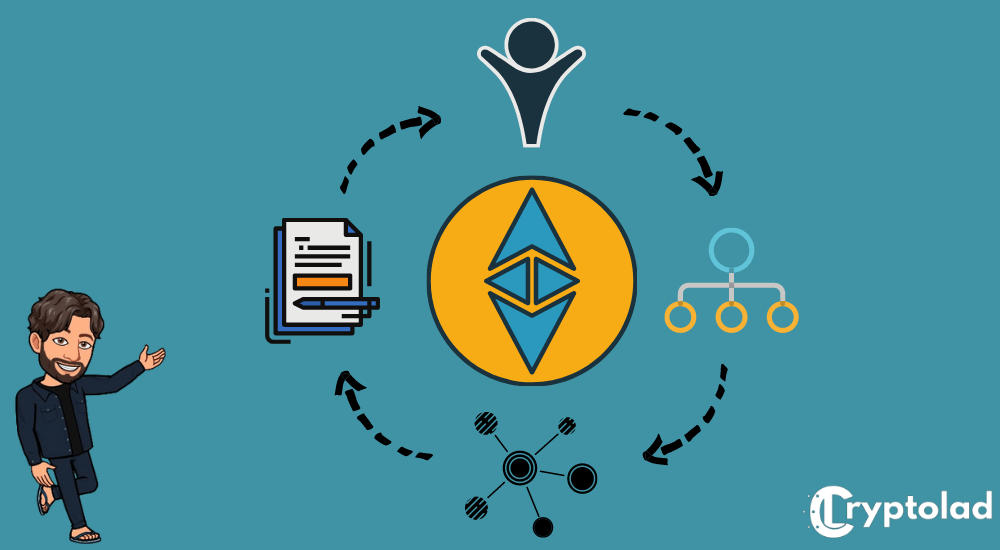
Numerous people worldwide try to solve the right hash value to meet a specific predetermined condition using computational algorithms.
Mining
Mining is essentially the process of adding transactional details to the present public ledger.
The method of mining involves generating the hash of specific block transactions.
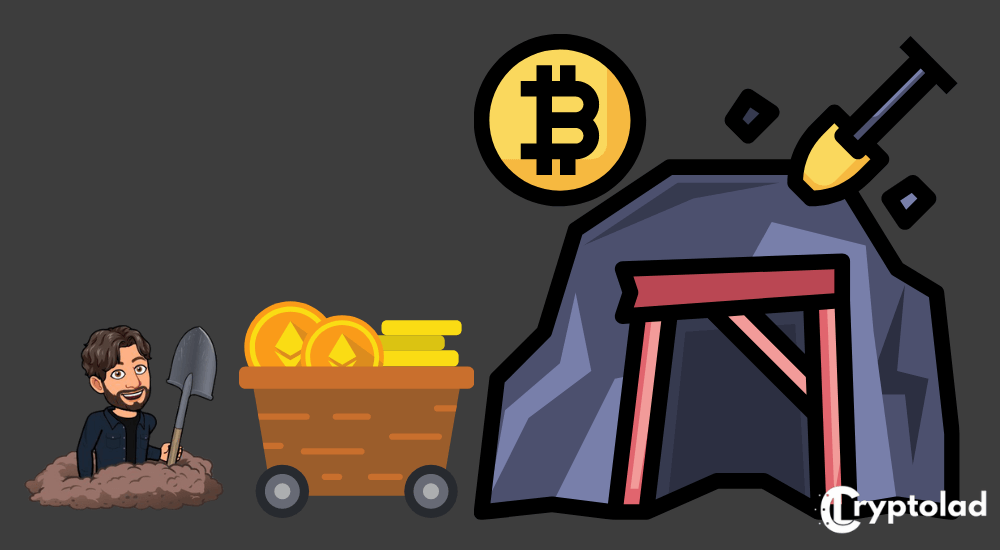
It's tough to forge a block transaction's hash; hence, the entire blockchain doesn't necessarily need a central system.
Advantages and Disadvantages of Blockchain
In today’s modern economic world, Blockchain is one of the contemporary technologies holding new perspectives.
It is a new and advanced type of database created to solve various industrial problems, such as accountability, security, and data processing efficiency.
With blockchain, we can improve reliability, trust, and security for business industries, government, and logistics networks in the upcoming days.
Nonetheless, the efficient execution of this technology relies on several variables.
As it is a decentralized digital ledger system, this technology has many benefits, but drawbacks still exist.
Here, we will go in-depth and explain the advantages and disadvantages of blockchain.
Advantages of Blockchain

- Distributed system
There is an intermediate entity in the conventional transaction process, such as a bank, credit card, or other facilities.
That costs you extra money in the name of the transaction fee. With blockchain, every transaction made is public.

Also, the actual expenditure gets minimized to a considerable degree.
Nonetheless, blockchain data is mostly stored in thousands of computers on a distributed network of nodes.
That is why the infrastructure and the data are highly adverse to technological errors and malicious attacks.
- No hassle of government interference
There is no interference by any government or any financial entity over virtual currency built on blockchain technology.
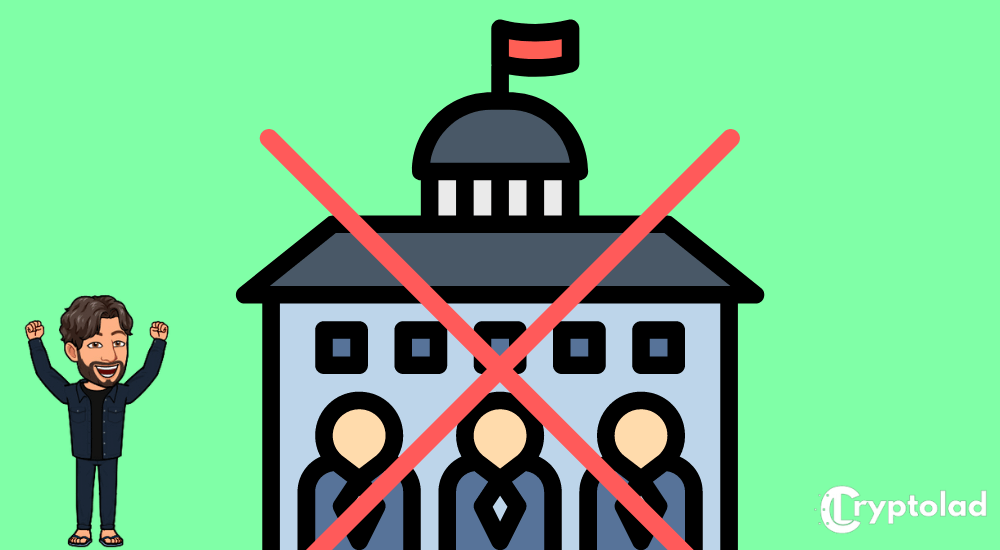
Blockchain is a decentralized virtual ledger.
Therefore, it is unlikely for the government to intervene and take action on cryptocurrencies.
- Stability
It is one of the significant advantages of blockchain. It is complicated to delete or modify blocks after data has been recorded in the blockchain.
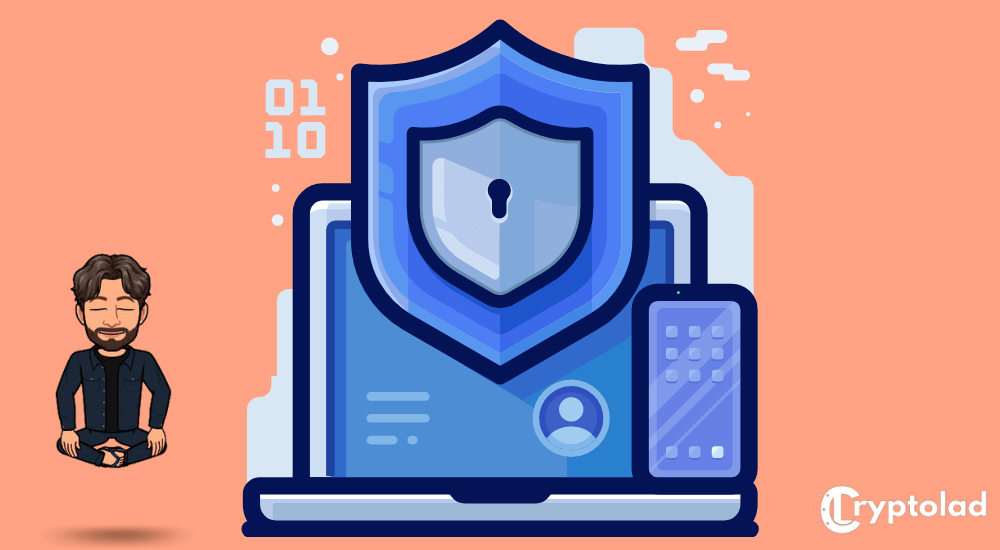
Every change in the block is monitored and permanently documented on a distributed and public ledger.
Because of that, blockchain is perfect for saving financial records or other information.
- Reduces cost with instant payment
You can quickly get your transaction done with blockchain at a minimal cost.
The procedure is well done with trustworthy transactions without any third-party interventions.

With blockchain, you will not find a lengthy documentation process.
On the other hand, transactions are completed with the least amount of mistakes.
- Security
Blockchain technology is extremely secure. Here every user who joins the Blockchain network is given a unique identity connected to their accounts.
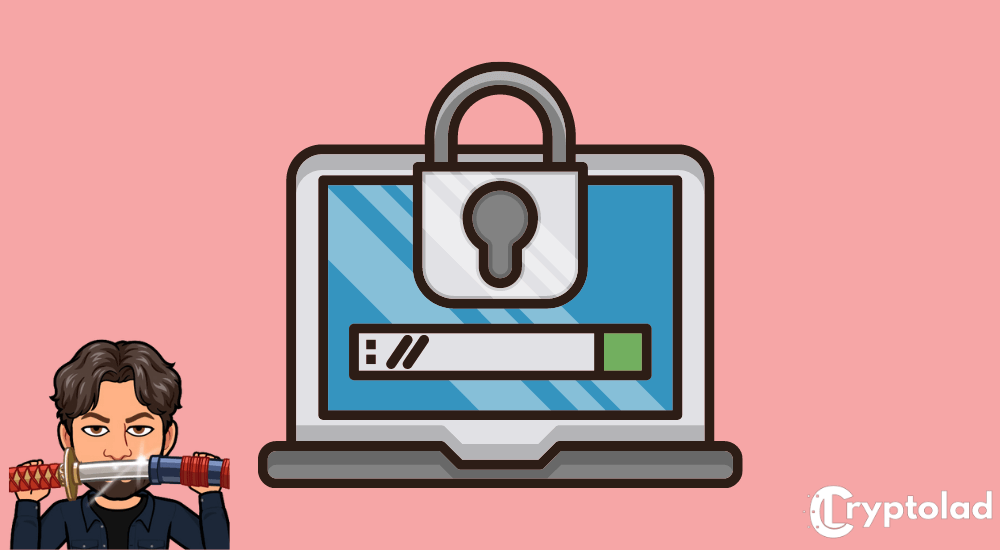
Through this, the account owner himself is running the transfers.
It is difficult for any hacker to interrupt the configuration because of the block encryption in every chain.
Disadvantages of Blockchain

- Private keys
Each blockchain address is formulated with individual private keys.
Cryptography works with blockchain processes that are public-key.
That public key address is then exchanged with others where they access it through their private keys.
However, the process will fail if a person loses his or her private key.
If this happens, there will be no way to save their money or transaction.
- Modification issues
A downside of blockchain systems is that it is challenging to modify once data has been added to the blockchain.
Though you may say stability is right, that is not always the case.
It's usually very demanding to change blockchain data or code.
That requires rewriting the codes and nourishing an extensive process.
- Scalability
If you consider the issue of scalability, the number of transactions per node is constrained.
Users may often have to spend several hours for the procedure to complete.
- Volatility
Blockchain technology-based cryptocurrencies are highly volatile.
The reason for this intense uncertainty is because both decentralized blockchain technologies and virtual currency are relatively new.
It is a significant decline, and this kind of uncertainty disturbs those individuals who are dreaming of investing in Bitcoin or some other cryptocurrencies.
What Makes a Blockchain So Secure?
Have you ever wondered, what is it about blockchain technology that makes it so secure?

From tracking charity donations and maintaining secure medical databases to running successful supply chain systems. Blockchain security technology is what prevents cryptocurrency from getting digitally multiplied or duplicated.
This blockchain security mechanism is not a simple subject, but we’ll try our best to simplify the details and help you understand it better.
Consensus and Immutability
At the core of blockchain security lies the concept of consensus mechanism and immutability.
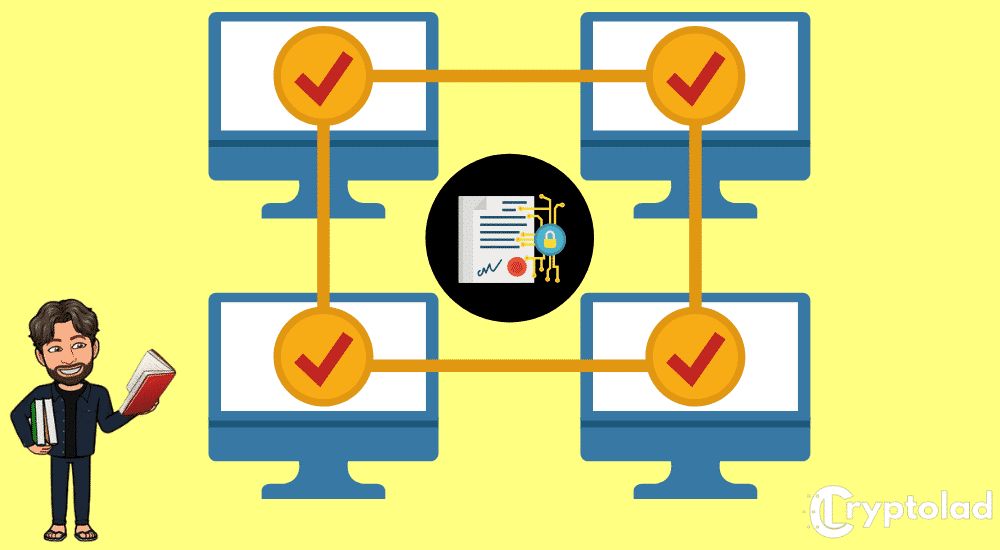
What happens is that when a transaction between two crypto traders takes place, members of that blockchain’s network distributed throughout the globe at different locations come together to validate that transaction.
These nodes register the new transaction along with the records of all previous ones inside a ledger.
This foolproof process is known as consensus and depends on the consensus algorithms.
On the other hand, immutability is what stops people from duplicating or altering the previously confirmed transactions or changes in the blockchain ledger, whether it’s for a cryptocurrency trade or a change in someone’s medical record stored with blockchain.
Together, immutability verifies the integrity of the data, whether it’s been altered before or not, while consensus algorithms ensure that a proper transaction or transfer occurs on the current network state and the new block is recorded successfully.
Cryptography Used in Blockchain Security
Blockchain security is heavily dependent on cryptography.
Cryptographic hashing is a process in which data input of some size enters an algorithm. The algorithm processes that data and produces an output containing fixed, constant size.

It’s important to understand here that hashing of any data size always produces a unique output different for every new unique input, with a constant length. Still, if the input is repeated even once, the hash will remain the same even if you keep running the hash function.
In a blockchain, these hashing functions act as identifiers.
How? Well, the hash for each new block gives an output depending on the input of the previous block because they’re linked in a chain.
As we discussed above, if the previous value is duplicated again in the new block as ill-intent, the hash will keep on producing the same output.
Therefore, any data change depends on a block hash change ensuring immutability.
Some Important Features of Blockchain Security
Ledger:
Ledger is the record keeper in a blockchain. It is an information chain of linked blocks that are immutable. Every node has a copy of this ledger to tally for and store new blocks.
Chain of blocks:
As the name suggests, blockchain is a series of interlinked or chained blocks. Every block has a specific hash value of the preceding block that helps them take the form of a chain of data.
Altering one of these hash values will produce a chain reaction that can affect the whole chain. This helps ensure that sensitive data stays protected.
Confidentiality:
Users in a ledger can only view authorized transactions.
Transparency:
Ledgers are shared to all the nodes, and the consensus is ensured among all of them.
Cryptology:
Important for immutability and strong chain of blocks based on hash algorithms.
Why Use a Blockchain?
Blockchain technology offers particular perks that all companies can benefit from. Such advantages include:
Decentralization
The blockchain system uses several computers to store the databases. And these computers are not under one roof.
What's more, each computer is operated by a unique individual or even a group of people.
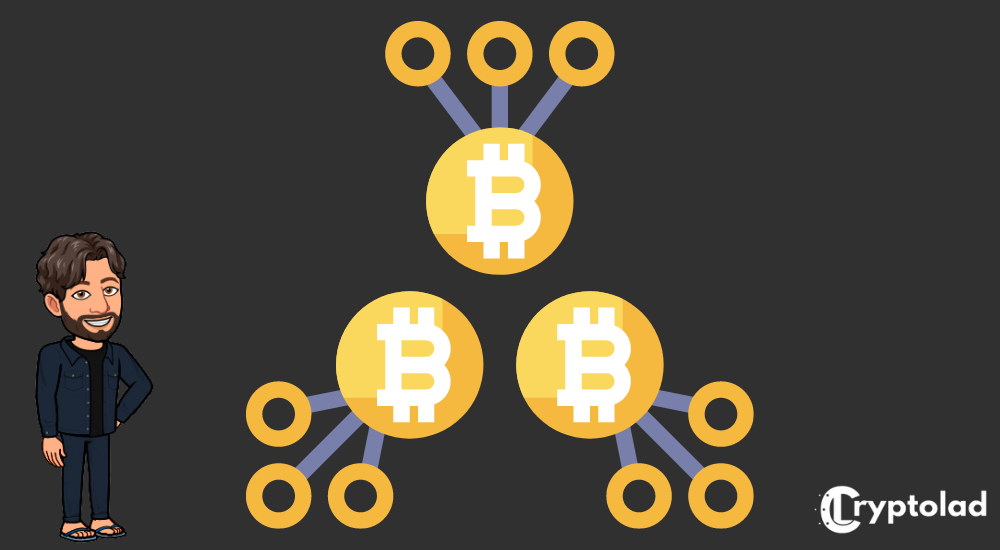
More importantly, all these computers are in different geographical positions.
That makes it virtually impossible to hack the system or even corrupt the information.
If one computer has a system issue, the rest of the nodes (computers with blockchain information) will cross-reference and pinpoint where the problem's origin is.
That way, no node can alter the information in the blockchain even when it's compromised.
With such technology in your business, you can run it without the fear of data being corrupted or lost.
Transparency
Due to the blockchain's nature, all transactions can be transparent since they can be viewed using a blockchain explorer or having an individual node.
That allows you to see all the transactions happening live. What's more, each node will remain with a copy of the transaction.
In a practical business, each store will have a copy of the transactions carried out within the company's system hence maintaining complete transparency.
- Safety
Without a doubt, blockchain technology caters to trust and security in several ways.
When a hacker attacks the system, every node will notice some discrepancy and ultimately remove the copy that the hacker has added into the blockchain.
That said, for anyone to hack the system, he/she will need to have a lot of resources and pull off convincing all the nodes in the network.
With that in mind, blockchain just might be the safest system we have today.
Blockchain Bridges Explained
If you want to transfer data or tokens from one blockchain ecosystem to another, you’ll need a blockchain bridge to provide a connection between the two.
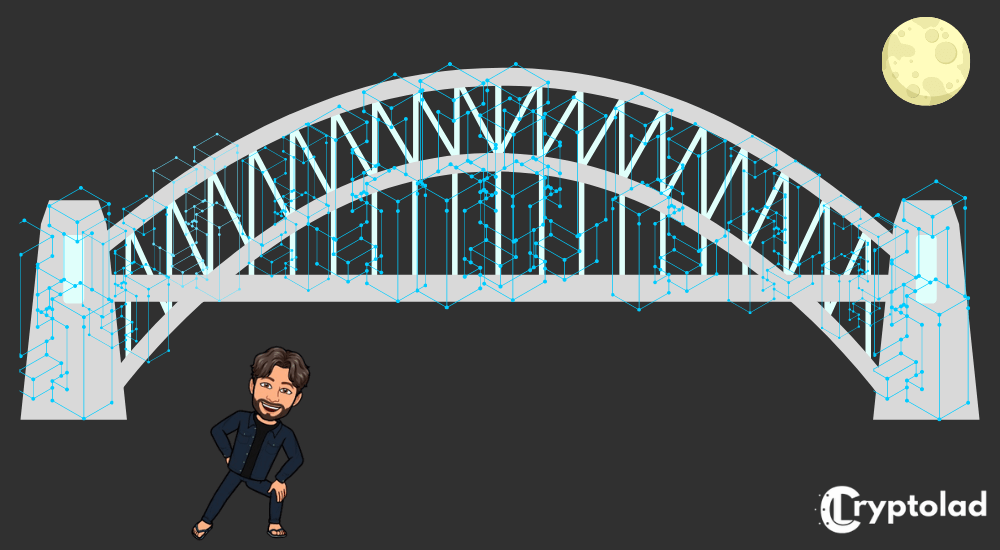
What is the Function of a Blockchain Bridge?
One of the most common problems with blockchain is that it’s challenging for various platforms to work in conjunction.
This means that if some developers create a decentralized application utilizing a specific platform, it will stay locked in on that platform indefinitely without having access to the benefits of another platform.
This is especially challenging when you encounter a particular problem with one platform and move to another, leaving behind all of its better features.
Therefore, Blockchain Bridge is designed to help you leverage both platforms' benefits in a single ecosystem and allow the cross-platform transfer of data, tokens, and smart contracts using its mint-and-burn protocol.
What are the Advantages of Using Blockchain Bridges?
Blockchain bridge users experience many benefits. For instance, DApp developers on Ethereum suffer from slower transaction confirmation speeds.
If they start using a bridge, they can easily process their tokens at another platform utilizing their higher speeds or lower costs while remaining on Ethereum.
This not only helps the developers but is also great for the blockchains themselves, reducing and dispersing the burden of traffic from them towards other less-crowded blockchains.
The bridges can also make the payment experience seamless, particularly for DApps that need instant settlements.
Examples of Blockchain Bridges
Many blockchain projects have specific versions of bridges.
Ethereum-Syscoin Bridge is one of these projects that helps users establish interoperability between both networks.

Syscoin provides instant, interactive settlement protocols to ERC-20 tokens, helping it process more than 60,000 transactions every second.
Apart from that, RSK is another smart contract platform working on the Bitcoin blockchain.
They have their own token bridge that allows easy traveling of assets between Ethereum and RSK, linking Bitcoin to Ethereum.
Are any Blockchain Bridges Available for dApps?
Blockchain bridges are still in the early stages and relatively new technology.
They can prove to be very promising for stablecoins projects.
This means that platforms working with them may face some issues too.
Nevertheless, the function bridges perform are essential to the interoperability and scalability of the blockchain landscape. They are on the path to becoming an integral part of the whole crypto landscape.
Why Do Blockchains Need Transaction Fees?
The blockchain fee is the amount a user is required to pay to process a cryptocurrency transaction.
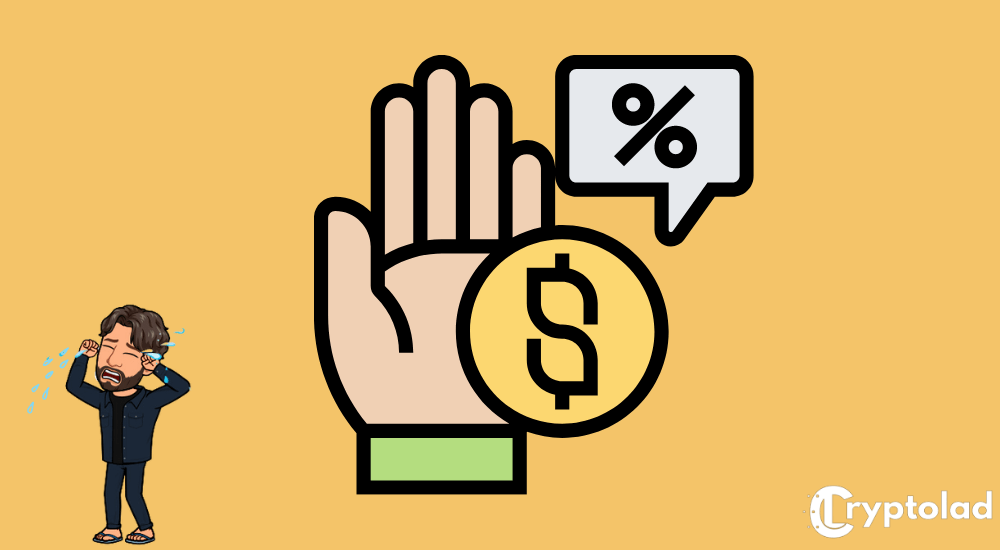
To know why blockchain needs a transaction fee, you need to have a clear understanding of what cryptocurrency is and how a cryptocurrency transaction takes place.
So, What Exactly is Cryptocurrency?
Cryptocurrency is the digital form of currency that exists only in computers and is used to exchange like other fiat money forms.
There is no middleman like a bank or any other financial institution, and no central government or authority is there to control it.
The users and computer algorithms control everything.
Before transaction fees are explained, you should know that all the transactions are being recorded in a public ledger called a blockchain network hosted by many powerful computers.
That's what makes it decentralized and controlled by users. There are many cryptocurrencies prevalent all over the world.
Bitcoin (BTC), Ethereum (ETH), Ripple (XRP), Litecoin (LTC) are the most popular among all of them.
Other alternative cryptocurrencies are called "altcoins."
The transaction occurs between two users through software called cryptocurrency wallet.
Parties associated with a transaction transfer balance from one account (AKA a public address) to another end using the wallet software and a password named private key.
All the transaction data is encrypted, and this is why the currency is called cryptocurrency.
The encrypted transactions are then broadcast to the cryptocurrency network and queued to be included in the public ledger.
If the transaction is not included in the ledger, it will be considered invalid. There is a process called mining to add the transaction to the public ledger.

People who devote powerful computers and energy to be a part of the network and include the ledger's transactions in exchange for financial reward are called miners.
The cost associated with a transaction goes to the miners.
The amount of fee varies depending on various issues.
Let's learn why blockchain needs transaction fees and how it takes place.
Why are Blockchain Transaction Fees Needed?
The followings are the most obvious reasons behind the blockchain transaction fee:
- To Process the Transaction on the Network
As with transferring money through a conventional bank or financial institution, every transaction requires a processing fee, but the reward doesn't go to any institution.
Individual miners who devote his/her effort to add transaction data in the public ledger receive this payment.
- To Ensure that the Transaction Completes on Time
The completion or recording of your cryptocurrency transaction depends on various factors.
Whether it will take place on time or will not depend on the blockchain fee and the blockchain network's load prevails.
There are many online tools you can try to check the network load before sending a transaction. If you make the transaction in low loading time, it will lower your transaction fee and complete it fast.
- To Speed up the Transaction
To further explain the transaction fees, let's move on to speeding up the transaction.
As per the aforementioned discussion, it's clear that to validate a cryptocurrency transaction. It's a must to record the blockchain's transaction data. Miners do this for a financial reward.
So, normally they prioritize recording those data based on the fee offered by the user.
The fee of a transaction doesn't depend on the amount of transaction but the network condition at that specific time and the size of the data.
- To Prioritize the Transaction
If you want your transaction to be recorded first, you need to pay a higher fee than others. This applies to all on-chain crypto transactions.
Most of the time, miners don't prefer to record larger data.
To prioritize your transaction, you need to pay higher to attract the miners to work for you.
- Size of the Data
In every block of the blockchain, only 1MB of data can be stored.
If your transaction size exceeds that, it will require a higher fee to be paid to record this data in the next block.
- Diminishing Coin Reward
Today, the majority of the mining activities are getting paid in the form of new coins. Whenever someone adds a new block, the miner gets paid with newly generated coins.
But as the coin reward becomes half of the previous amount approximately every four years, the amount of transaction payment plays a key role.
- Higher Network Congestion
When cryptocurrency users send a transaction request, it reaches a virtual space named Mempool and waits to be picked by the miners.
If the Mempool is full, miners get options to pick the codes which offer higher fees.
Sometimes, in times of emergency, users manually offer a higher fee to get the job done quickly.
- Demand for Block Space
The capacity of all the cryptocurrency networks is not the same.
Some of them can contain a minimal amount of data in a block and restrict the miners how many transactions a miner can add or the amount of space a block the miner can take.
So, in times of network congestion, the demand for the network space rises, and so does the fee as the users want their transactions to be completed fast.
- Micro-deposits in the Crypto Account
If the user’s account holds a history of so many small deposits, it will make his/her next transaction so large because of huge inputs.
As a result, the transaction size will become higher, and so does the fee associated with the transaction.
Your amount of currency doesn’t matter; the size of data it holds determines the fee.
Uses for Blockchain Technology Other than Cryptocurrency
Cryptocurrency has had its own shares of ups and downs ever since the inception of Bitcoin in 2009.
That doesn’t mean that we can overlook the endless possibilities presented to us by blockchain technology.
It’s a compelling alternative to conventional currency, centrally-controlled banking, and traditional transaction methods that can help us revolutionize the global economy's face and rewrite the way we do banking.
Here’s how we can employ other uses for blockchain to make our world a better place.
- Smart Contracts
Smart contracts revolve around the concept of completely programmed business contracts that run just like they’re coded.
They diminish the possibilities of any fraud, downtime, third-party interference, or censorship.

They’re computer programs coded to execute the terms contained by any contract between two concerned parties.
Since they’re executed using computers, no two parties can break away from them, enable them to bypass any regulations, and reduce costs.
- Refugee Aid
Millions of people are uprooted from their native countries every year and forced to take refuge in different parts of the world.
Being persecuted and living in an extraordinary land can be a tough position to be in, especially in terms of money.

Employing cryptocurrency to help refugees has been one of the numerous other uses of blockchain technology.
Numerous projects have helped thousands of refugees, especially in Syria, with redeemable cryptocurrency vouchers, mostly using the Ethereum blockchain.
These vouchers helped refugees buy essential food items like pasta, lentils, oil, etc.
- Cloud Storage
Blockchain is used to access high-capacity cloud storages, which is usually available only to bigger companies.
Blockchain usage can distribute the user-base to average individuals and companies to better use cloud technology and reduce costs.
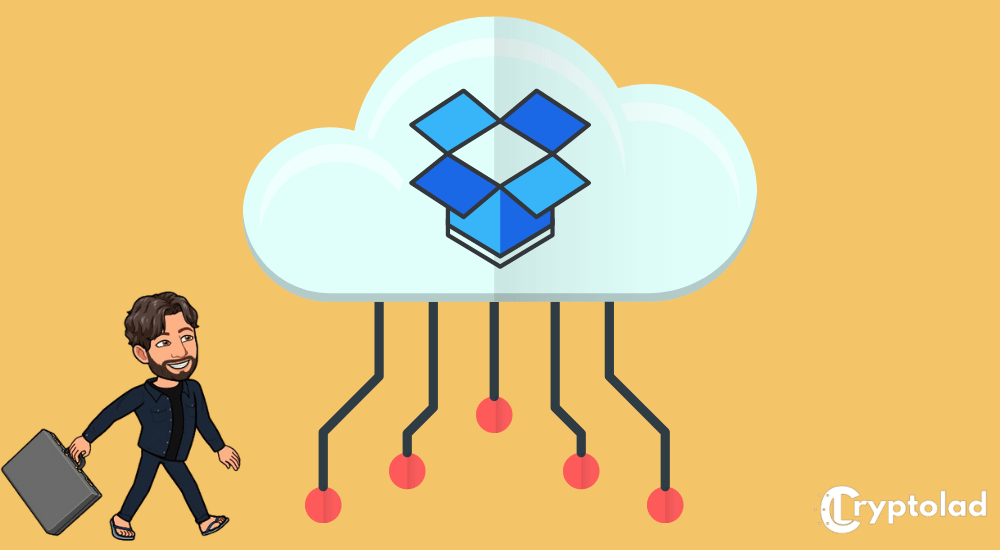
This can be done by decentralizing the storage to millions of blockchain users worldwide by allowing them to rent their hard disk storage spaces, reducing costs and dependency on bigger, dedicated cloud firms.
- Medical Records
Our medical records are mostly all digitalized.
This means our sensitive, private information is prone to cyber-attacks and exploitation.

Smart contracts and other blockchain technology use in data management can preserve our privacy and create a network of distributed content-management for our medical data.
- Employee Salaries and Company Transactions
Paying salaries to employees can involve transaction processing fees that can amount to a huge accumulated total.
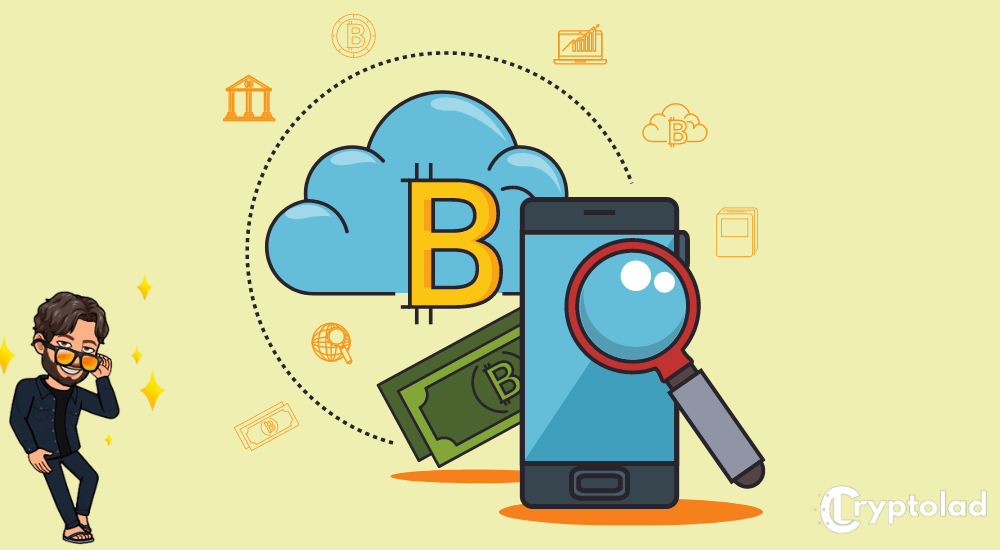
Using blockchains, you can save major costs while paying workers, making transactions around the globe, and reducing the time it takes for money to travel from one part of the world to another by half.
Blockchain Used in Healthcare
When you hear the word blockchain, the first thing that pops up in your mind is probably Bitcoin or crypto.
However, blockchain is a far more diverse system and is slowly expanding to various industries, especially for its protection and data storage.
Along with supply chain management, charity, and forex, blockchain in healthcare is gaining momentum.
Let’s explore things that make blockchain suitable for healthcare.
What is Blockchain Used for in the Healthcare Industry?
You probably already know that blockchain is a great way to secure and register financial transactions and their histories in a way that is not possible to hack.
Well, we can apply the same mechanism to protect our health records, medical data, and history.

So how does that happen?
It’s simple, well kind of...
Blockchains are decentralized, and we can use them to secure and record medical data using complex cryptography.
This incorruptible database of records can then only be accessible after the strict approval of concerned participants in the network.
Another feature of blockchain in healthcare is its ability to use peer-to-peer architecture to synchronize the patient’s record with the updated details.
Blockchain technology ensures that each distributed node in the special, private network has a copy of the entire blockchain, data stays updated, and the record remains authentic.
Benefits of Using Blockchain in Healthcare
- Better Security - The first and foremost benefit blockchain in healthcare provides an increased sense of security. It creates a peer-to-peer, integrated database of distributed nodes, covering tracks of any updates to the medical data and registering new details. This distributed network allows heavy security protocols to work, makes it less vulnerable to privacy attacks, technical failure, and other external threats.
- Interoperability - Blockchain in healthcare can potentially eliminate the data storage differences of various healthcare services like clinics, hospitals, etc. They help them work with single record storage and share sensitive documents securely and easily.
- Transparency and access - In addition to added security and interoperability with a unified system, using blockchain in health care facilities can facilitate the patients to have higher access and participation in their own personal records. This eradicates any chance of intentional distortions or human errors.
- Better supply chain - Tracking pharmaceuticals from the manufacturing hubs down to the retail end can help take out the problem of forfeit medicines. This can help ensure proper shipping and storage conditions as well during transportation etc.
- Protection from insurance fraud - Fraud in healthcare services and insurance like overbilling or including made-up charges. The blockchain records can’t be altered, so these frauds that cost Americans $68 billion would be prevented.
- Recruitment for clinical trials - One more use of blockchain in healthcare that is often overlooked is its application in clinical trials' accuracy and effectiveness. The companies preparing the trials can directly identify a person's compatibility during the enrollment, comparing their health record and their trials' requirements. This could also help single outpatients directly benefit from a specific drug the pharmaceutical company wants to test.
How is Blockchain Used in the Supply Chain?
Blockchain is leading the way to revolutionize the world of supply chain management.
With every day that goes by, supply chains are becoming more complex and have started accommodating diverse stakeholders.
The present supply chain regimes rely on numerous external third parties and other complications.

However, the blockchain used in supply can simplify this process and regulate all the communications, data, and document exchanges occurring in this ecosystem.
Advantages of Blockchain in Supply Chain Management
It’s important to analyze blockchain features in the supply chain before identifying the areas that can benefit from this technology.
Controlled & Transparent Transactions
By default, blockchain is decentralized has no intermediaries like banks, etc.
This gives every transaction a quick processing time while the recording ledger keeps getting updated automatically.
Additionally, you can also view the transactions personally if you’re from one of the authorized parties.
Predetermined Fees
Unlike traditional overseas transactions from SWIFT, international blockchain transactions have predetermined fees that a seller knows before making a transaction.
- Accountability
Miscreants can’t tamper with any information present on the blockchain unless the concerned parties authorize someone to do so.
- Reliability
The decentralized blockchain used in the supply chain cannot have any point of failure.
This is due to the very nature that helps it eliminate fraud risks and make transactions immutable.
Blockchain supply chain use cases are diversifying every day, and new successful pilot projects keep on emerging now and then.
A few areas where blockchain is used in supply chain management can yield great results, from increased efficiencies and new operational models to substantial cost-savings.
- Logistics
- Attribution and traceability
- Manufacturing
- Procurement
- Digital payments and business contracts
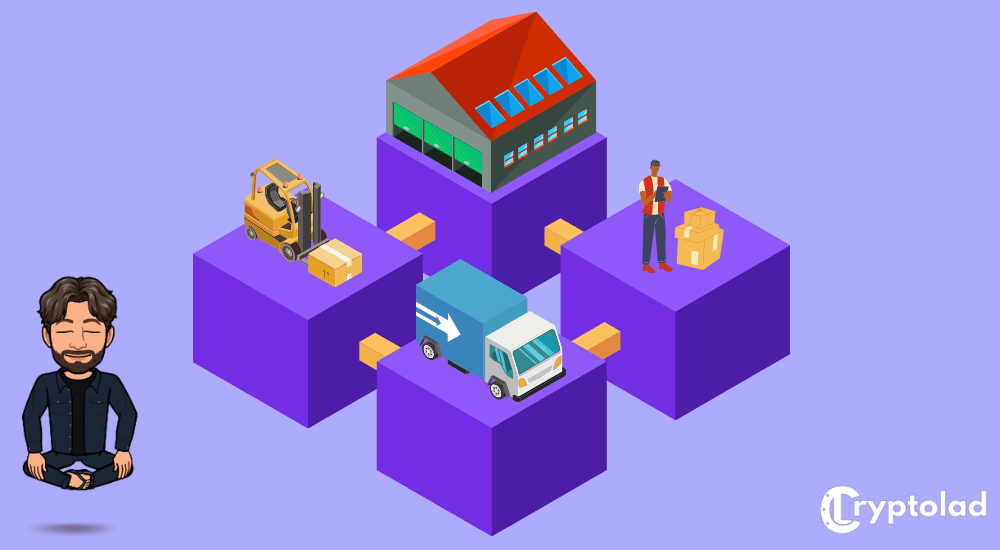
How to Implement Blockchain for Supply Chain Management?
1. Work out the feasibility and use case for blockchain
It’s important first to establish a thorough case for the implementation of blockchain in any business model.
You can only implement blockchain in the supply chain if your organization is ready to embrace that change.
Therefore, a feasibility study of processes, transactions, and digital networks your organization or business is working on is very important.
2. Find the correct blockchain collaborators
Blockchain used in the supply chain can only be successful if it’s a collective effort between you and your partners because the blockchain itself is a collaborative effort by default.
It’s important to engage your business partners and bring them into confidence to implement this technology vigorously and incorporate it robustly.
3. Look for ways to create data interoperability
You’ll need to interconnect different data streams into your technological ecosystem to correct blockchain usage in your supply management system and your organization’s ERP systems.
4. Absorbing volatility of blockchain
Blockchain is an expanding world, so changes in its value and technology are quite frequent.
You will need to create cushion systems in your organization to absorb this volatility.
Blockchain Used in Charity
Lack of transparency, mode of donations, and accountability issues often create problems for charitable organizations.
However, blockchain in charity organizations and fundraising can provide a solution to all these complications.
You can use blockchain currencies to raise funds more easily and facilitate contributions to charities.
Donations Via Cryptocurrencies
Cryptocurrencies have a long journey to go through before people worldwide give them more acceptance and adopt it as a mainstream currency for payments.
This journey is even longer for those willing to use blockchain in charity.

However, several charity organizations have already started adopting blockchain as a donation method using cryptocurrency.
There are certain aspects that a charity organization needs to know about before getting donations with blockchain technology in general and cryptocurrencies in specific.
First, they’ll have to maintain an efficient process of distribution and management transparently.
Secondly, they must know how they can convert cryptocurrencies to fiat currencies.
Potential Advantages of Philanthropy With Cryptocurrency
There are some advantages of using blockchain in charity organizations for donors and receivers like:
- Complete Transparency
There’s nothing easier than keeping track of donation money using blockchain in charity. This is because each cryptocurrency transaction is unique in its encoding and verification, ensuring transparency, integrity, and accountability necessary to ensure that a charity organization keeps running successfully.
- Decentralized
Blockchains bring a very high decentralization level that surpasses the confines of borders and territories since crypto doesn’t rely on regulators like some country’s central bank etc. This helps money travel easily between borders and makes it a lot easy for international transactions.
- Document safety and contracts
Using blockchain in charity can allow you to store and share data digitally. It helps guarantee that no one can modify or alter important contracts and documents without all the network members' approval.
- Manageable expenses
Apart from safety and transparency, blockchain technology creates ways for charity management to become more simplified, reduces third-party costs, and automates certain parts of the process that typically require money.
- Reduction of the tax burden
If you’re in the US and make a charity contribution using Bitcoin, you’ll be able to donate the full intended amount without paying any capital gain taxes. Apart from that, this will also enable you to claim higher tax deductions.
Possible Issues of Blockchain in Charity
While adopting crypto-philanthropy and using blockchain in charity, you need to be aware of some potential concerns:
- Fluctuations: Since the world of cryptocurrency is still expanding and taking form, the markets fluctuate quite frequently and cause significant value changes.
- Level of understanding: The concept of blockchain and cryptocurrency is growing in popularity, but that does not mean that everyone understands its basics well just yet. Additionally, it’s also quite difficult to explain blockchain technology and establish trust with people who don’t know anything about how this new concept works, especially with something as sensitive as charity work.
Future Uses of Blockchain
Cryptocurrencies like Bitcoin and Ethereum have hundreds of millions of dollars in value.
None of this would’ve been possible without the advent of blockchain technology.

While the popular use with cryptocurrencies might have made the word blockchain synonymous with crypto and Bitcoin, it doesn’t mean that its uses are confined to this only.
The future of blockchain in different sectors will revolutionize the way we live.
Here are the best uses for the future in blockchain technology:
Decentralized Internet of Things (IoT)
Current IoT technology uses a central mode of connectivity that runs the risk of one-point malfunction.
A blockchain-based decentralized IoT network can minimize functional risks and security hazards.
Tech giants like Samsung and IBM have already begun working on the blockchain-enabled IoT.
Election Transparency and Security
Elections are probably one of the most controversial affairs in some parts of the world.
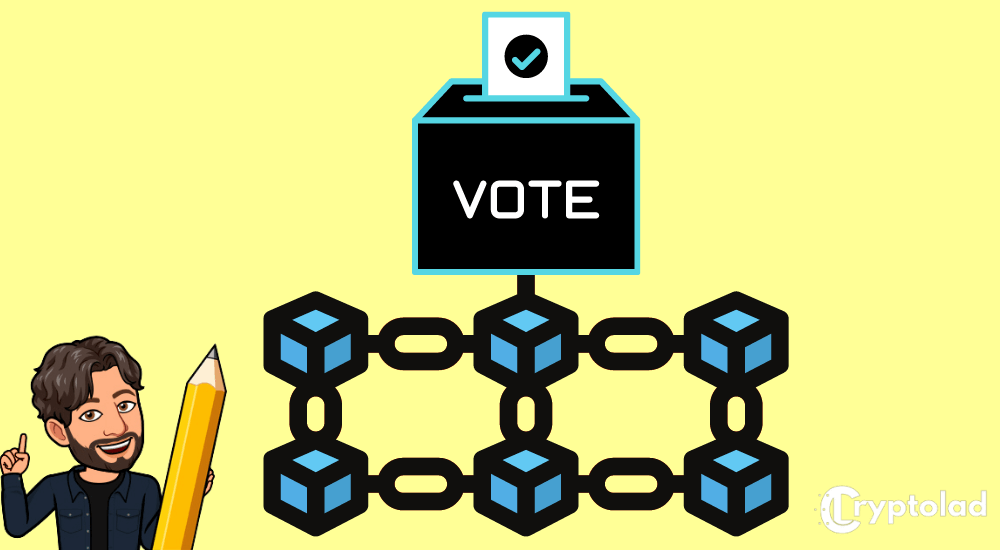
There’s hardly any election that’s free from allegations of influence, manipulations, fake voting practices, controversy, rigging, and fake voter IDs.
The future of blockchain in the elections will enable all democratic voting processes to follow a credible, secure, and decentralized mechanism for conducting elections in multiple locations in a single day simultaneously instead of doing it traditionally in phases.
Swarm Robotics
The swarm robot concept revolves around interconnected simple robots that can be programmed to perform complex tasks together as a unit.
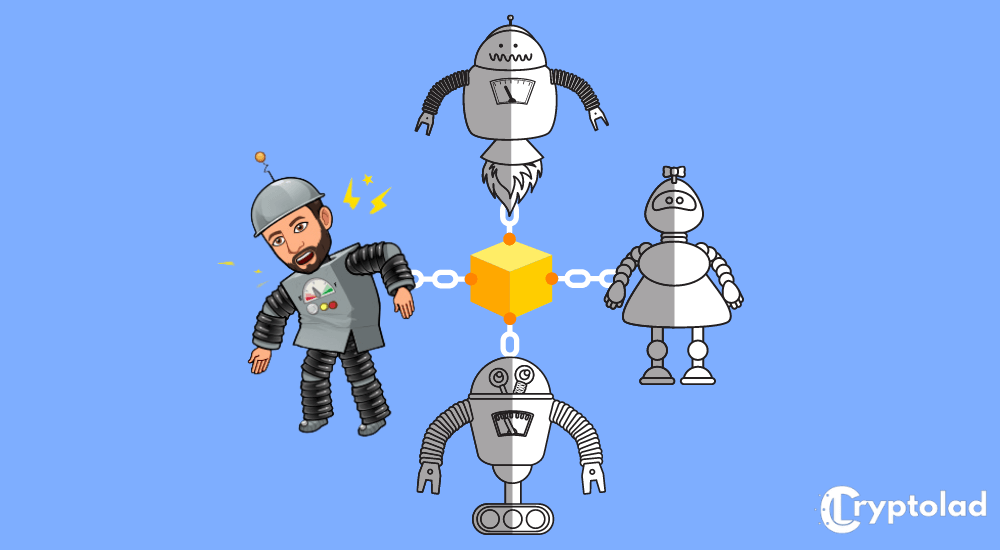
However, this requires a lot of coordination, communication, and real-time information sharing between all the nodes of the unit.
Blockchain technology can help achieve this level of coordination with the best impregnable security apparatus.
Books, Movies, and Music
Many content creators fear piracy and don’t release their content on the internet even though there’s a bigger range of audiences present.

Filmmakers, singers, and authors are reluctant to use the internet on a larger scale for releasing their work online even in this day and age.
To solve this problem of piracy and to remove the intermediaries or third parties, the future of blockchain technology could help creators ensure that their work is never pirated and that people who are willing to pay for their content can pay directly to them without needing any intermediaries.
Automated, Self-Executing Smart Contracts
It’s not hard to imagine what the future of blockchain holds for us in the business domain.
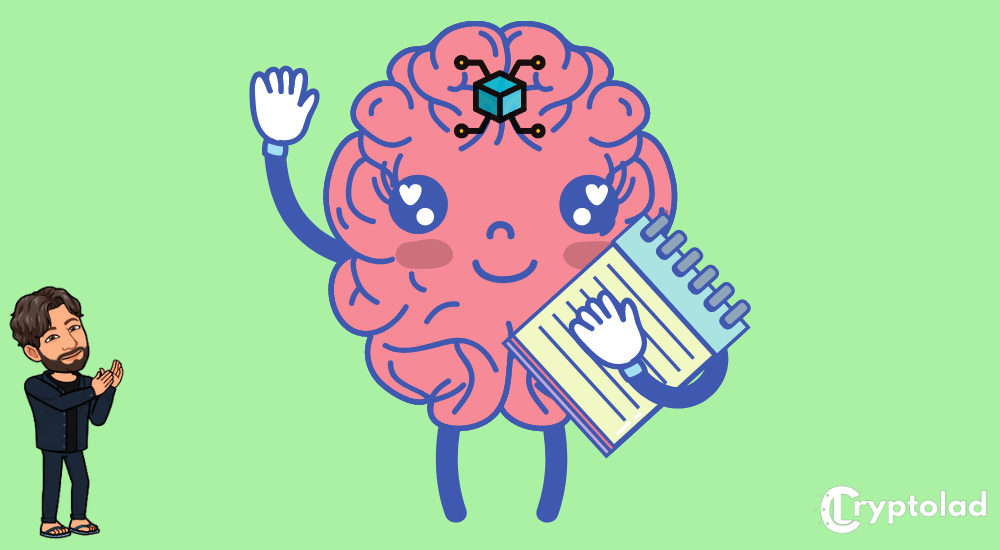
Blockchain can help enforce encoded contracts between two parties, automatically transferring money or resources from one party to another.
The computer program can stand in as an intermediary and execute whatever’s written in the mutually agreed contract.
Real Estate
The future of blockchain looks quite promising when you look at it from a real estate business perspective.
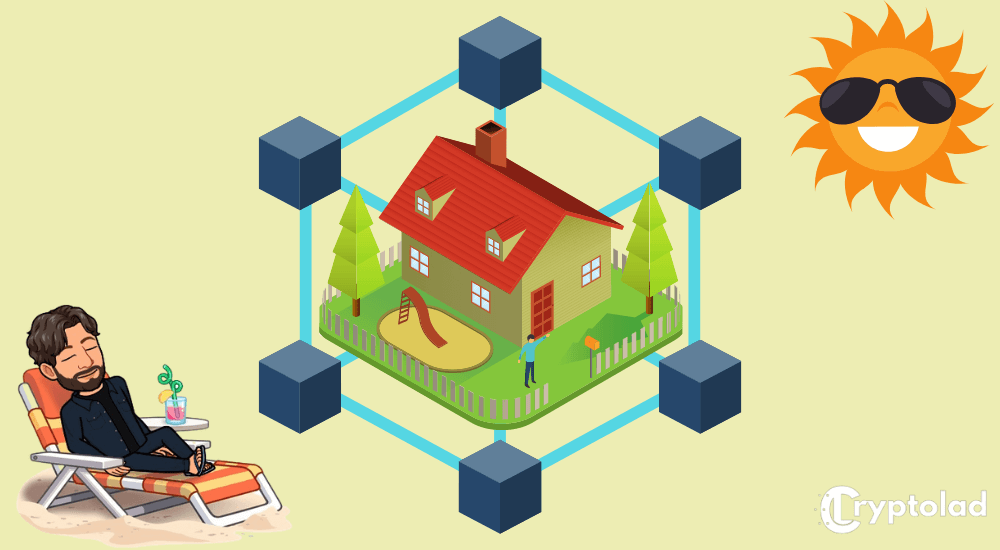
This is because many lawyers still have to go through massive land record books to verify ownership, check for fraud while rummaging through old, dust-ridden registers that date back to their town’s founding.
What is blockchain able to assist with in the real estate market?
The public ledger function of blockchain technology can also be used as a land-records register, with all the details updated automatically in case of transfers.
Final Thoughts
Blockchain technology has the ability to revolutionize many different industries.
Blockchain technology's main power lies in the decentralized nature and ability to eliminate the need for trust on the network, making it the perfect tool to automate just about anything.
Which future use of blockchain are you most excited to see? Let us know in the comments!
New to Crypto? Download our Free Crypto Beginners Ebook
The Fastest Way to Buy Bitcoin: Buy Bitcoin Cryptolad